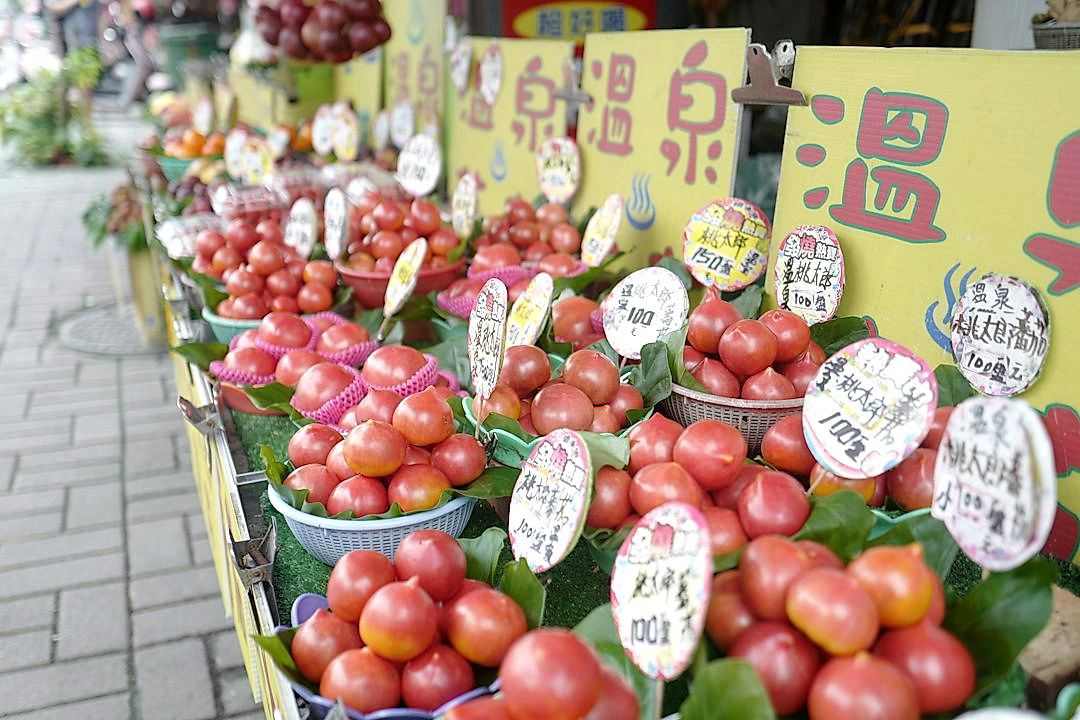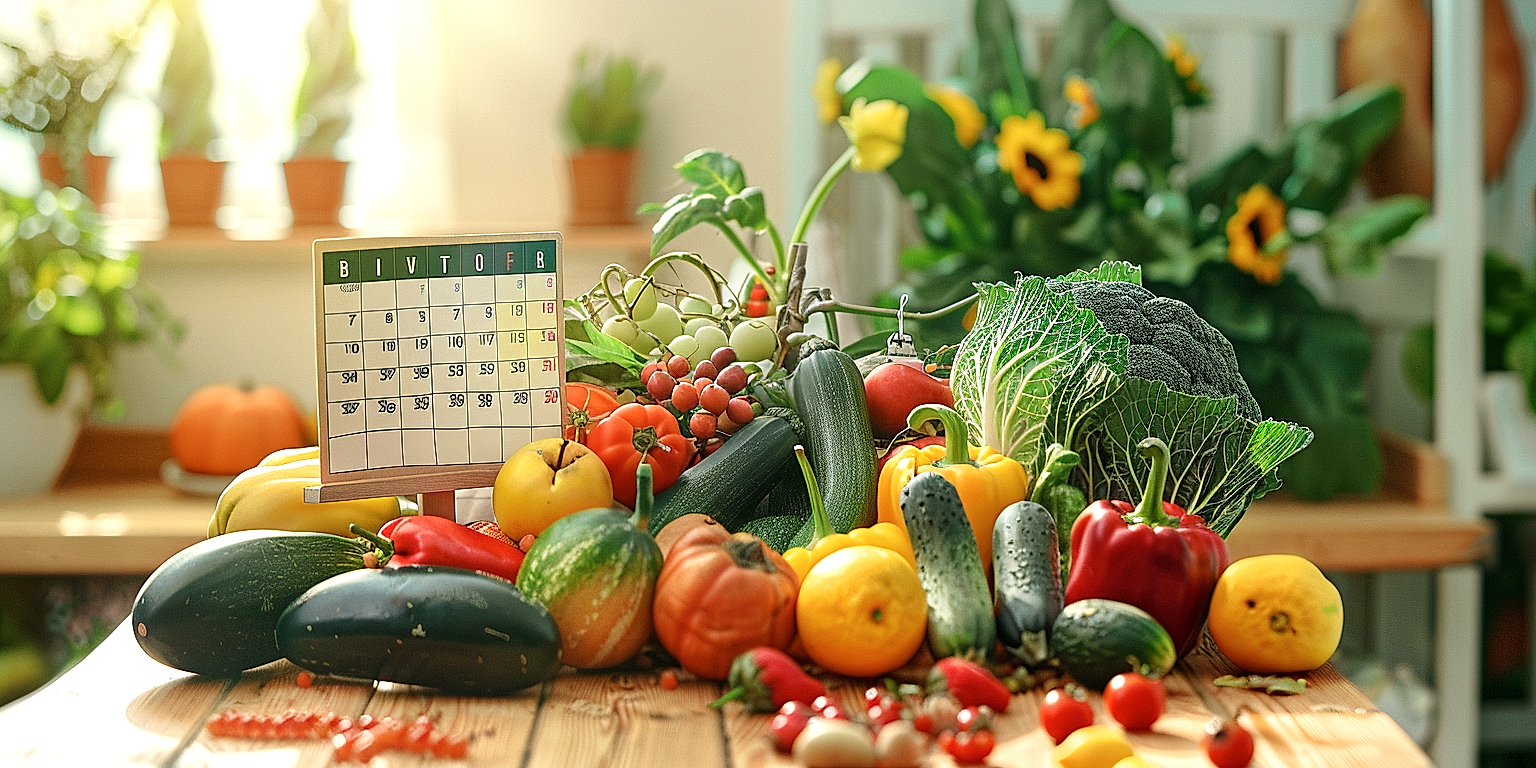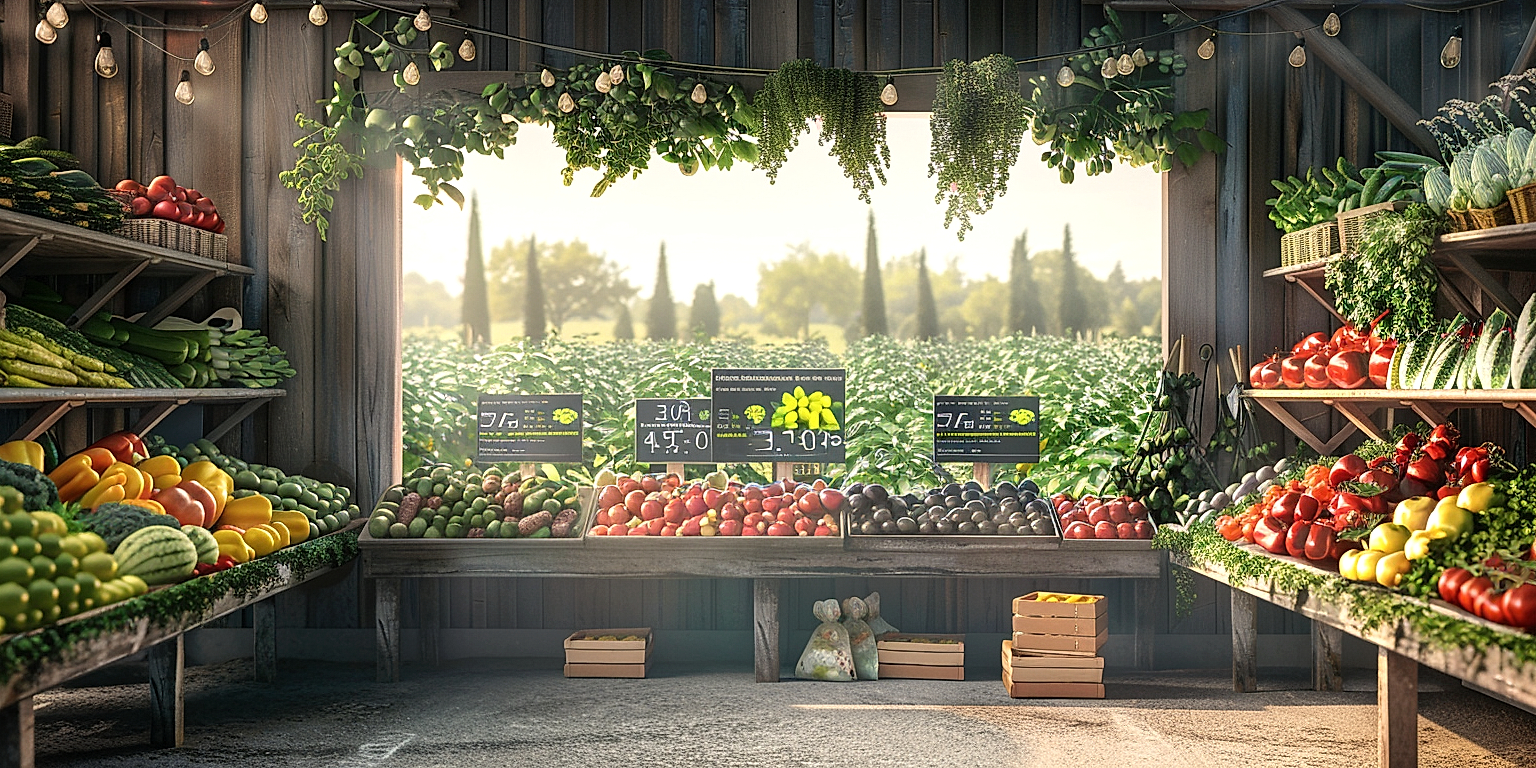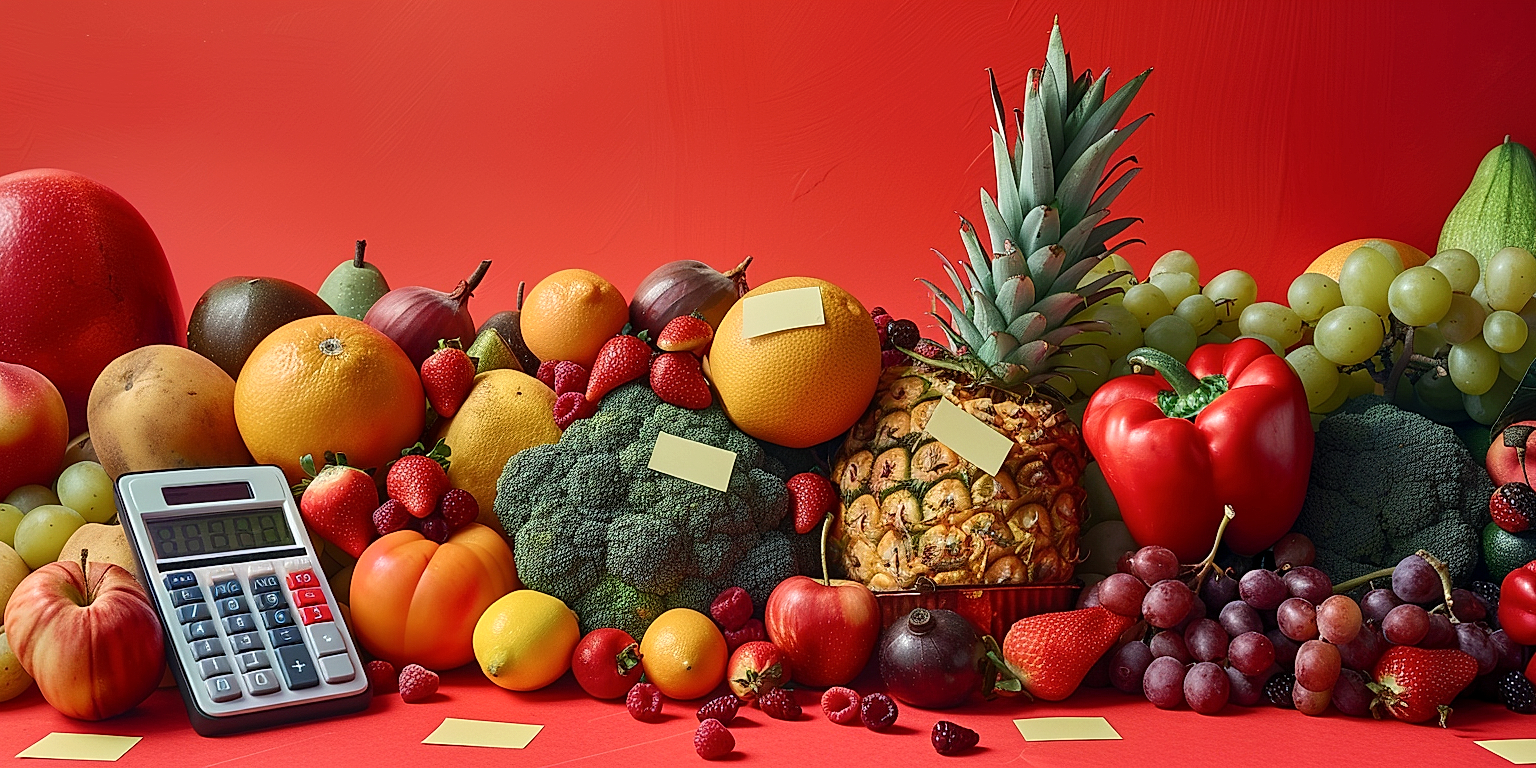Understanding consumer behavior is an essential element for any successful business, particularly in produce retail where competition is high.
Pricing psychology leverages the cognitive biases that influence purchasing decisions, making it a significant factor in a retail strategy.
Implementing these strategies effectively can significantly drive sales and enhance customer satisfaction.
In fact, the right approach to pricing could make the difference between a sale and a missed opportunity.
This article will explore some of the most influential pricing psychology strategies.
Let’s dive in and explore strategies to create a pricing model that appeals to the logic and emotions of your customers.
Ways To Use Pricing Psychology In Produce Retail
1. Use the charm pricing approach ($0.99)
Charm pricing, often referred to as just-below pricing, is a psychological pricing strategy that taps into consumers’ emotional responses to particular price points.
With this strategy, produce merchants price items a few cents below a round number, such as pricing an item at $0.99 instead of $1.00.
This might seem insignificant, but studies have shown that it can have a significant impact on consumers’ decision-making process.
The theory behind charm pricing is that consumers tend to perceive these prices as being significantly lower than they actually are.
So when they see a price of $0.99, they might mentally round it down to $0, making the cost of the item seem like less of a burden.
It’s a small nudge that can make a difference in the customer’s perception of value, and potentially influence their decision to buy.
Charm pricing plays on our brains’ natural tendency to process numbers from left to right, making $0.99 seem closer to $0 than $1.00, thus creating an illusion of a bargain.
This route to the consumers’ wallet through their psychology is not only clever but has been proven effective in numerous retail settings, including the produce market.
Employing the charm pricing strategy can help retailers create a perception of affordability and value that might draw more customers and improve sales.
It is a fairly simple strategy to implement, as it requires minimal adjustments to your current pricing structure.
However, care must be taken to ensure that the implementation of charm prices does not significantly impact the profitability of the business.
It’s important to strike a balance between attracting customers with lower prices and still covering your costs and securing a profit.
Remember, the goal here is not to undersell but to optimise sales by leveraging psychological pricing strategies.
It can also be interesting to pair charm pricing with other strategies, like discounts or bundled deals, for even greater effect.
Combining charm pricing with other marketing strategies might enhance its effectiveness and contribute to overall sales growth.
Regardless of how it is implemented, charm pricing can provide a competitive edge for produce retailers looking to stand out in a competitive market.
By ticking a psychological box in the customers’ minds, you potentially increase their likelihood of making a purchase, thereby improving your bottom line.
2. Price Anchoring with Upscale or Organic Options
The concept of price anchoring is a pivotal strategy in pricing psychology that can greatly impact your sales in produce retail.
It bases itself on the principle that consumers tend to rely heavily on the first piece of information offered (the anchor) when making decisions.
In the retail industry, price anchoring is usually implemented by initially displaying higher-priced items or options.
By showcasing upscale or organic options first, customers naturally anchor the value perception to the first price they see.
Once the high price is established as a starting point, any product priced lower would seem more affordable.
This method effectively makes use of the relative perception of value rather than absolute value, influencing customers to make purchases they may not have originally considered.
When positioned and implemented correctly, price anchoring can vastly improve revenue streams by encouraging customers to opt for higher-priced quality items.
In the context of produce retail, introducing a line of rand or organic products at a higher price point gives you that anchor.
Organic foods have perceived increased health benefits, which can justify the higher price to the consumer.
Establishing such items in your inventory and strategically placing them first in the line of sight of customers sets a subconscious standard of pricing.
The non-organic counterparts, while priced lower, still maintain the required profit margin for your business, making it a win-win situation.
It’s worth mentioning that communication plays a key role here.
Customers need to understand why certain products are more expensive to appreciate the contrast in prices and value they bring.
Increased transparency gains customer trust and upscales the customer experience by aligning pricing with value perception.
This strategic interplay between price anchors, customer perception, and communication is a powerful tool in pricing psychology and, when deployed correctly, could amplify sales significantly.
3. Employ Decoy Pricing Strategy
The decoy pricing strategy is a technique widely used in retail, including the produce department, to steer customers towards purchasing a specific item.
It relies on the cognitive bias that consumers have, making comparisons easier when they have three options instead of two.
Essentially, you introduce a third product, priced higher than the other two, to make the mid-range product seem more attractive by comparison.
Decoy pricing is known to significantly influence customer purchases, directing them towards options that offer better profit margins for the retailer.
This strategy is highly effective in guiding consumer behavior and enhancing the perceived value of certain products.
For example, you may offer three types of apples; regular apples priced at $1 per pound, organic apples priced at $2 per pound, and premium apples priced at $3 per pound.
The premium apples act as a decoy, making the organic apples appear as an affordable upgrade compared to the regular apples.
Customers who might have originally only considered the regular apples may now see the organic apples as a better value-for-money choice.
By implementing decoy pricing properly, you can manipulate customers’ perception of cost, pushing them to extend their budget and spend on more high-value items.
Though this tactic may sound devious, it does not involve any unethical practices because the pricing and product information is transparent and truthful.
By experimenting with different combinations of products and pricing, you can determine the most effective decoys in various situations and continuously tweak your strategy.
However, it is important to note that decoy pricing only works when the high-priced item has clear and distinct advantages over the lower-priced option.
Merely assigning a higher price tag to a product of similar quality or value will result in customers feeling misguided and exploited, which could have a negative impact on your brand’s reputation.
This particular pricing strategy requires careful thought, correct positioning of products, and genuine value addition to be successful.
Ultimately, the aim is to make customers feel they are making a smart, balanced choice, thereby boosting their satisfaction and increasing their likelihood of repeat purchases.
4. Create tiered pricing for multiple purchases
In the world of retail, specifically within the produce industry, one strategy that grasps the interest of customers is tiered pricing for multiple purchases.
This involves encouraging customers to purchase more items at a lower price per unit.
For example, an apple might cost $1 individually, but if five apples are purchased together, the price per apple could be reduced to $0.80.
This method works particularly well if the produce in question is one that is commonly used in large quantities or frequently consumed.
It can create a psychological illusion that encourages customers to buy more, as they perceive more value in the bulk purchase.
When it comes to implementing this strategy, the specifics of your price tiers should be carefully considered.
This is because too much of a price gap might discourage single purchases while too small of a gap may not provide enough incentive for customers to consider buying in bulk.
Thus, the prices on each tier should be carefully selected to enhance sales without compromising the profitability.
Displaying your tiered prices clearly for your customers to see is also an important part of this pricing strategy.
Yes, visual cues can be a strong driving force in rousing the interest of the customers, encouraging them to buy more of a specific product.
Since human beings are visual creatures, the usage of signs or banners advertising your tiered pricing can grab the attention of your customers, nudging them to check out the deal.
It’s also interesting to note that tiered pricing is not only restricted to identical items.
For instance, it’s fully possible to create a pricing strategy that offers a discount when different kinds of produce, say apples and oranges, are purchased together.
This gives you a chance to cross-sell, possibly moving more of your stock and making it more likely that produce won’t go bad before it’s sold.
Ultimately, the end goal of such a pricing strategy should be to maximize overall revenue even if it means earning a bit less on individual items.
Therefore, creating a tiered pricing strategy for multiple purchases is definitely one method worth considering when trying to use pricing psychology in retail, especially in the produce industry.
5. Highlight Savings in Bundle Deals
The psychology of pricing can be a powerful tool in produce retail, particularly when it comes to highlighting the value of bundle deals.
Offering produce in bulk deals can serve multiple purposes, including encouraging customers to purchase more and demonstrating the savings they can achieve when they do so.
This concept taps into the buyer’s desire to feel like they are getting a great deal for their money.
While the concept of bulk buying is not new, properly highlighting the financial savings achieved in such deals creates an irresistible offer for most shoppers.
Bundling deals can be made even more attractive by presenting them in a way that emphasizes the perceived savings.
For example, customers are more likely to bite on a deal if they see “Buy 5 for $4.99, Save $2!” as opposed to simply “5 for $4.99”.
This way, customers not only see the price, but also the amount they will save, which can create a stronger incentive to purchase the bundle.
It’s also important to keep in mind that bundle deals should not always be about selling more volume.
Sometimes, it’s more beneficial to sell smaller quantities at a higher price, which still presents a savings to the customer.
For example, instead of selling a large bag of apples for a low price, you might sell a smaller bag for a slightly higher price, but still present it as a deal with a “Buy more, save more” tagline.
This strategy can be especially effective for produce retailers, as it will entice customers to buy more than what they initially intended.
Moreover, it supports the notion that buying in bulk provides value and maximizes their hard-earned money, which many consumers find particularly attractive.
The key is to package and present these deals in a way that makes the customer feel like they are getting the best bang for their buck.
The power of this pricing psychology strategy lies in its ability to steer customers towards a particular purchase.
By highlighting the savings a customer can achieve through a bundle deal, retailers can effectively guide their buying decisions and boost overall sales.
The key to successfully implementing this strategy is to make the potential savings evident and appealing.
In the end, customers’ perception of the overall value they are getting for their money is what will drive their purchasing decision.
Thus, it’s essential for produce retailers to make use of pricing strategies like bundle deals, to create a sense of value and motivate customers to buy more and save more.
6. Promote Limited-Time Discount Pricing
When seeking to increase sales in produce retail, promoting limited-time discount pricing can prove to be a highly effective strategy.
Through this method, buyers are encouraged to purchase quickly to take advantage of the price decrease before it expires.
Not only does this strategy boost sales by capitalizing on customers’ desire for bargains, but it also creates a sense of urgency that can drive even more purchases.
For optimum effectiveness, these promotions should be prominently advertised both within the store and through other marketing channels.
Whether on store signage, in ads, or via social media posts, capturing your audience’s attention with the promise of a great deal is crucial.
Remember, the goal of limited-time discount pricing is to prompt immediate action from your customers, leading to a significant boost in sales.
It’s important, however, to be mindful about the frequency and proportion of your discounts—too many can lead to a devaluation of your products while too few might not encourage buyers.
A balance needs to be struck to ensure that profitability is not compromised.
Moreover, timing is a critical element in the success of a limited-time pricing strategy.
For instance, deploying it during peak seasons or holidays, or in conjunction with other major store promotions, can greatly improve its reach and effectiveness.
The use of a countdown timer on these promotional advertisements also significantly enhances their effectiveness.
Limited-time discount pricing is not exclusive to in-store purchases; it can be effectively executed online to drive even more sales.
For online customers, timely reminders via push notifications or emails can ensure that they don’t miss out on the great discounts.
However, a seamless checkout process and effective communication are a must; customers should not experience any difficulties when availing of the discounted prices.
In all, while using this pricing tactic may require more intensive planning and strategic thought compared to everyday pricing, the potential rewards in terms of growth in sales and revenue can be extremely substantial.
7. Contrast Regular Prices with Sale Prices
One of the most effective ways to employ pricing psychology in produce retail is to contrast regular prices with sale prices.
This strategy, commonly known as ‘discounting’, is extremely popular among businesses and consumers alike.
It’s generally well received because it gives customers a sense of saving, which can be very appealing.
Applying it in the context of produce retail, this could mean highlighting the difference between the original price of an item and its current, discounted price.
Visually displaying both the regular price and the sale price can make customers feel like they’re getting a deal.
The psychology behind this is simple: it helps customers perceive the value of the product in relation to its price.
Clients might see the regular price and immediately get a sense of the initial value of the product.
However, when they see the lowered, sale price, they feel like they’re getting that product for less than it’s worth, which results in an increased perception of value.
This is especially true if the product is of high quality – seeing a high-quality product with a lowered price can make buyers feel like they’re getting a steal.
Framing the value of a product in such a way can lead to more sales and greater overall profit for your produce retailer business.
Another effective way to amplify these feelings is by using time limits – this creates a sense of urgency and scarcity, which can push consumers to make the purchase.
Another tactic to consider when contrasting regular prices with sale prices is to use color.
Bright colors, like red, are often used to indicate sale prices, which can draw attention to the discount.
Using color can be a powerful way to visually separate the regular and sale prices, reinforcing the idea that the customer is getting a good deal.
The key to effectively contrasting regular prices with sale prices lies in making the customer feel like they’re getting more for their money.
Incorporating aspects like time limits and color can enhance these feelings and make your produce retailer business more appealing to potential customers.
The Bottom Line
Strategically implementing pricing strategies such as “charm pricing”, price anchoring, decoy pricing, tiered pricing, bundling and technically offering discounts dramatically bolster sales and conversions.
These tactics not only make products and services appealing by highlighting their price attractions and dollar savings but also establish a sense of urgency with limited-time offers.
Additionally, contrasting regular prices with sale prices helps to communicate the value proposition to customers.
Companies who appropriately employ such diverse pricing strategies are likely to stir the purchasing desires of their potential customers, thus enhancing their profitability in the long run.




